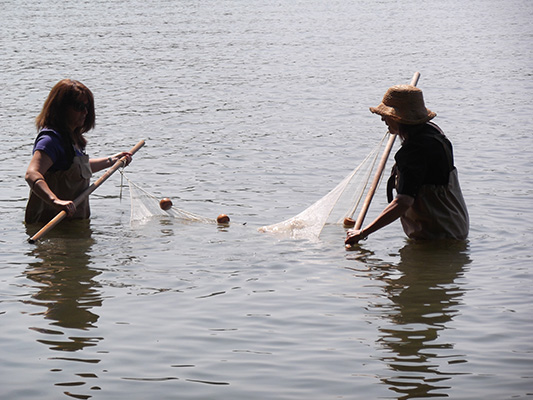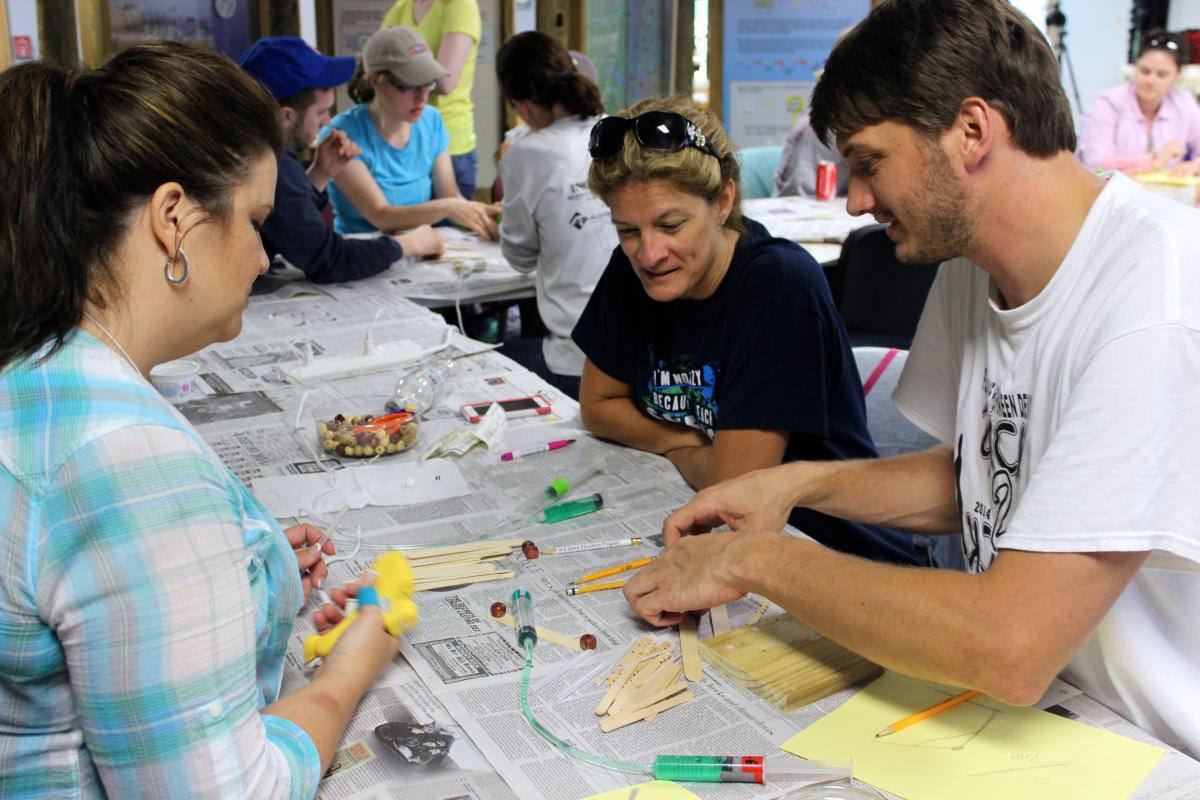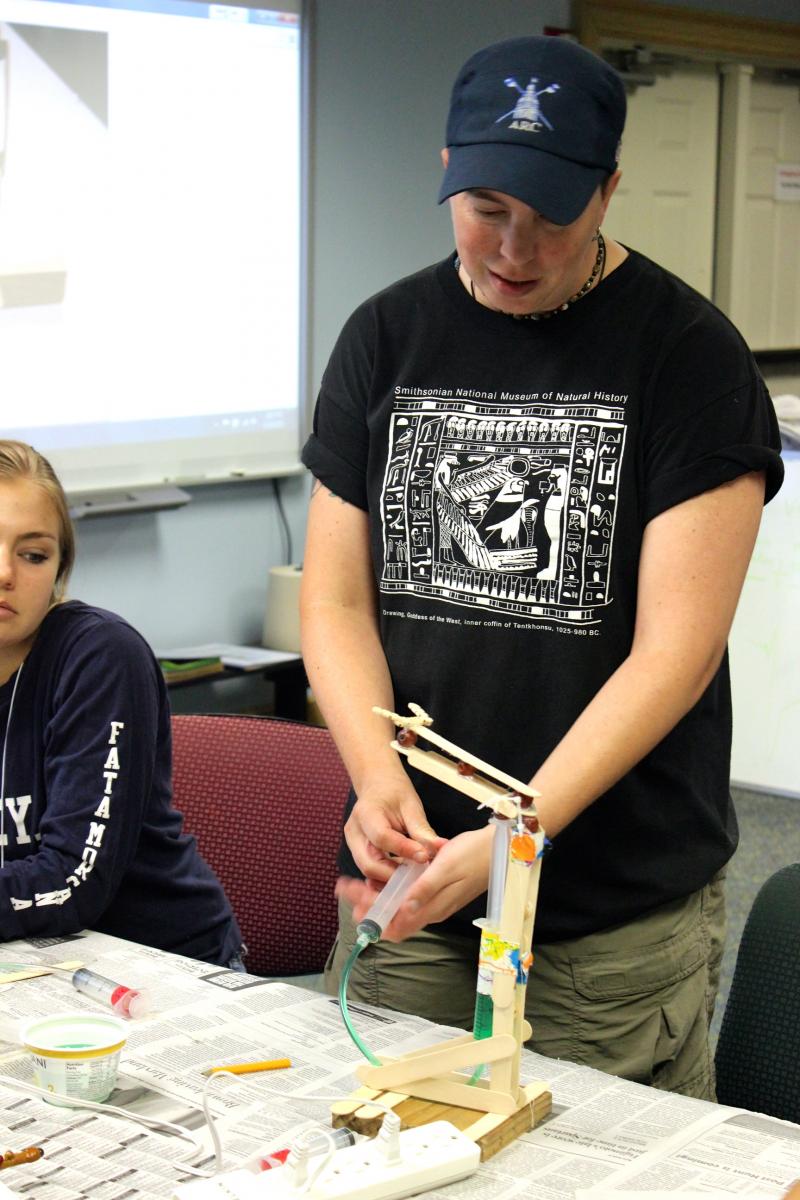Blue Crab Engineering: A Biomimicry Project for All Ages
Sometimes, a blue crab and a handful of Popsicle sticks can teach you more than a textbook.
This June at our Science Education Academy for Teachers on biodiversity, educators from across America discovered how scientists are learning from Mother Nature's engineering. As it turns out, many of the world's greatest technologies were invented long before humans figured out fire. Copying the designs and processes of life, or biomimicry, may hold the key to the science of the future -- and to a few amazing classroom lessons.
Biomimicry: Copying Designs from Life

Visiting teachers seining for crabs at SERC
Because it isn't a true teaching academy without a field trip, our educators traveled to the Smithsonian Environmental Research Center (SERC) on the Chesapeake Bay to experience biodiversity firsthand. When they weren't modeling waders or seining for crabs, they were engaged with presentations by SERC's Mark Haddon and Karen McDonald, a former SERC outreach coordinator and current curriculum coordinator (say that three times fast) at the Science Education Center. One such talk was on biomimicry.
Would you believe that a bullet train was inspired by a bird? Or that bumblebees can inspire drones? In many cases, natural selection and evolution have already dealt with problems we now face in engineering. Through biomimicry (a word deriving from the Greek for "copy" and "life"), we can work toward a cleaner, more efficient Earth. Nature, after all, has already given us the blueprints.
While at SERC, teachers learned how a blue crab molts by pumping water into its shell until the pressure causes the shell to burst. It's a beauty of nature and also a project design for the classroom. Karen McDonald explained how an experiment that copies blue crab hydraulics can fit in any grade.
"I've done this project all the way down to third grade and all the way up to twelfth," Karen explained, passing out baskets of craft supplies. "Now, I want each group to build something that uses hydraulic pressure to move an arm up and down. Go."
When Teachers Become Students

For a moment, the teachers poked cautiously through their baskets. Popsicle sticks, a hot glue gun, some beads, zip ties -- there was nothing that couldn't be found in a typical craft closet. The key component was a set of two water-filled syringes connected by tubing, but that wasn't giving away any answers.
The room was filled with brainstorming. Like in any classroom, no two groups were quite the same -- some had members more familiar with engineering who took the lead, while others joined together to combine their lack of expertise. After a few minutes of fumbling, Karen came around with a model she had created to a chorus of "oohs" and "aahs". Now presented with a blueprint, the groups took inspiration from Karen's design and continued.
Representing eight states and almost all grades, PreK -- 12, our teachers became engineers
When the workshop was over, there were six different models of hydraulic arm (and none looked exactly like Karen's). Each team, whether they had had a quick or slow start, had emerged with something functional to show for themselves -- and a plethora of cell phone photos and videos to prove it to their friends back home.
Brining Biomimicry Home

Karen McDonald demonstrating her hydraulic arm design.While the teachers excitedly fiddled with their new creations, Karen explained how biomimicry has a home from the classroom to the science fair. She taught that the project could be made simpler for younger grades and more complicated for high school students. Beyond blue crab hydraulics, she suggested, students can go into their own local ecosystem and see animal engineers at work. They can then write a report, make a poster board, or build a model. (One five-year-old student had even asked if he could use his toy train to show how snake vertebrate connect and move!)
Headed back to the city and its human-made marvels, the teachers left SERC with a project they could show their students and an experience that would impact their teaching back home. A few teachers could even be heard exclaiming, "I'm going to do this with my kids next year!" as they boarded the bus. Hands-on inquiry and discovery is powerful and memorable for all ages, and we were excited to show them how amazing it can be.
If you're not sure where to start or how to bring biomimicry into your classroom, visit the Biomimicry Education Network at ben.biomimcry.net for detailed K-12 lesson plans, or check out AskNature.org to explore more biomimicry in action!
As our teachers learned, inquiry is more fun and memorable when it's hands-on -- and it's appropriate for any age level. If you're interested in joining us for our next SSEAT workshops, click here to view our upcoming events.
